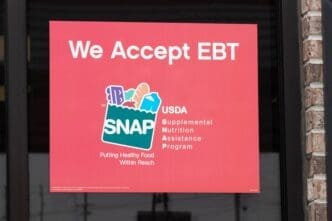Executive Summary
The Story So Far
Why This Matters
Who Thinks What?
Two federal judges have ordered the Trump administration to utilize emergency funds to disburse at least partial food stamp benefits for November, impacting tens of millions of Americans amid an ongoing federal government shutdown. President Trump has since directed his administration’s lawyers to seek legal guidance from the courts on how to expedite the funding of these benefits.
Judicial Orders and Administration Response
The rulings came on Friday, October 31, after the U.S. Department of Agriculture (USDA) had halted November allocations, citing a lack of funds. This decision prompted lawsuits from a coalition of Democratic-led states and various advocacy groups. President Trump posted on Truth Social that he has instructed lawyers to ask the courts how to legally fund the benefits as quickly as possible, noting that delays are still expected.
U.S. District Judge Indira Talwani in Boston stopped short of explicitly requiring the administration to tap into the contingency fund, but affirmed the USDA’s obligation to use those funds for partial November benefits and gave the department until Monday to decide on additional funding sources. Separately, a judge in Rhode Island ordered the government to use the contingency fund to ensure some benefits could be distributed starting November 1. The Justice Department had previously indicated it might appeal adverse rulings.
Benefit Delays and Funding Challenges
Despite the judicial orders and President Trump’s directive, immediate relief for the nearly 42 million Supplemental Nutrition Assistance Program (SNAP) recipients is not expected. Benefits will be delayed, and it remains uncertain whether individuals will receive full or partial payments. The USDA’s contingency fund has approximately $5.3 billion remaining, which is insufficient to cover the estimated $8.2 billion in monthly benefits, with total expenses closer to $9 billion.
The USDA also has access to nearly $17 billion in tariff revenue. However, a Justice Department attorney argued that using these funds for SNAP would negatively impact the child nutrition programs they are intended to support. Both Judge Talwani and the Rhode Island judge, John McConnell, left the decision on whether to use these additional resources to the USDA.
Procedural Hurdles for Partial Payments
Should the USDA opt for partial payments using only the contingency fund, significant logistical challenges would arise. State agencies, which had stopped the process of issuing November benefits after an October 10 USDA directive, would need to recode their systems to issue reduced amounts. This process has never been undertaken and could take anywhere from a few weeks to several months for some states, potentially leading to payment errors.
Patrick Penn, deputy undersecretary of the USDA’s Food, Nutrition and Consumer Services, stated in a declaration that “no template, processes, or past experience exist to inform a reduction in benefits.” He noted that the ability and time required to implement such a system change would vary greatly among state agencies, some of which operate with decades-old systems. Additionally, the USDA would need to determine how to calculate and authorize reduced allotments, an effort that could be hampered if employees are furloughed during the shutdown.
Impact on Recipients
The delay will immediately affect millions of Americans who rely on SNAP benefits for food assistance. An estimated 3 million recipients typically receive their benefits on November 1, with the number growing to nearly 13.7 million by November 5. Advocacy groups, such as the Food Research & Action Center, confirm that November benefits “are not going out on time.”
The Center on Budget and Policy Priorities suggests that if the administration complies with court rulings to release contingency funds immediately and supplements them with legal transfer authority, benefits could be issued with only a short delay. If recipients receive partial benefits in November, they would be eligible for retroactive payments once the government reopens.
Outlook
The situation highlights the complex legal and administrative hurdles facing the distribution of critical food assistance during the ongoing government shutdown. While judicial orders have mandated the release of some funds, the timing and extent of November’s SNAP benefits remain subject to further administrative decisions, potential appeals, and the logistical challenges of implementing an unprecedented reduction in aid.








